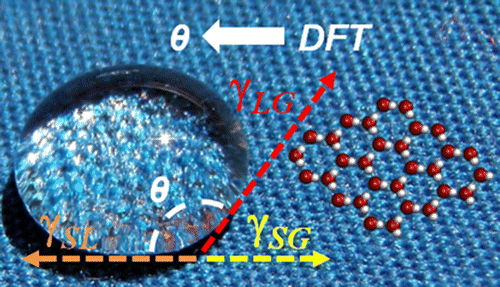Rare-earth oxides (REOs) possess a remarkable intrinsic hydrophobicity, making them candidates for a myriad of applications. Although the superhydrophobicity of REOs has been explored experimentally, the atomistic details of the structure at the oxide–water interface are still not well understood. In this work, we report a density functional theory study of the interaction between water and CeO2, Nd2O3, and α-Al2O3 to explain their different wettability. The wetting of the metal oxide surface is controlled by geometric and electronic factors. While the electronic term is related to the acid–base properties of the surface layer, the geometric factor depends on the matching between adsorption sites and oxygen atoms from the hexagonal water network. For all the metal oxides considered here, water dissociation is confined to the first oxide-water layer. Hydroxyl groups on α-Al2O3 are responsible for the strong oxide–water interaction, and thus, both Al- and hydroxyl-terminated wet. On CeO2, the intrinsic hydrophobicity of the clean surface disappears when lattice hydroxyl groups (created by the reaction of water with oxygen vacancies) are present as they dominate the interaction and drive wetting. Therefore, hydroxyls may convert a intrinsic nonwetting surface into a wetting one. Finally, we also report that surface modifications, like cation substitution, do not change the acid–base character of the surface, and thus they show the same nonwetting properties as native CeO2 or Nd2O3.
